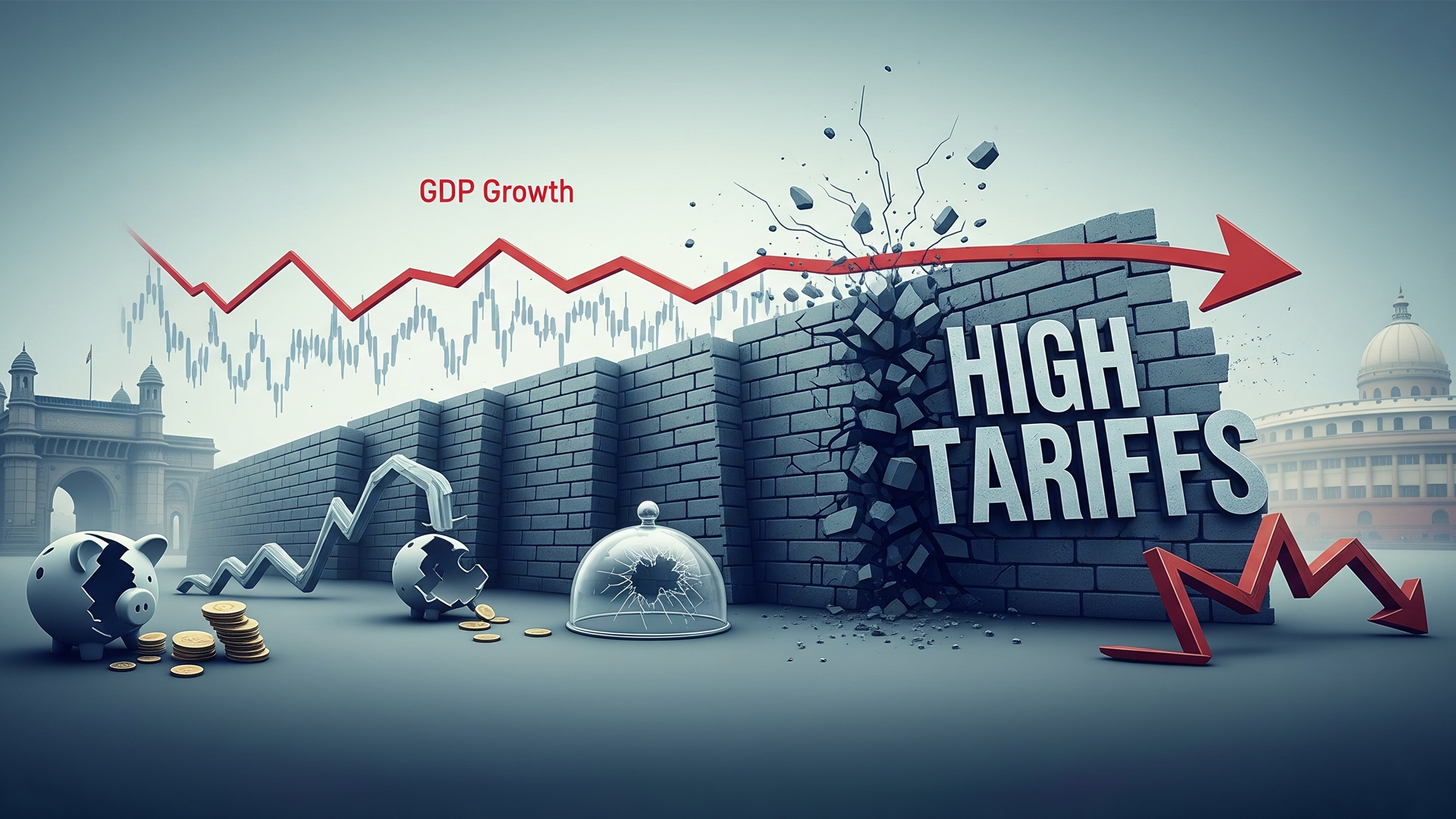Trump’s 50% Tariffs Jolt Indian Economy, Markets Slide as Trade War Escalates
Key sectors like IT and auto take a hit while pharma finds some relief amid rising trade barriers.

New Delhi: India faces an economic crisis after former U.S. President Donald Trump imposed devastating 50% tariffs on Indian imports, triggering market chaos and threatening millions of jobs.
The punitive measures arrived in two phases: a 26% "reciprocal tariff" targeting India's trade surplus, followed by an additional 25% penalty against New Delhi's energy cooperation with Russia. This 50% tariff wall, effective August 27, represents the most severe trade action against India in decades.
Markets in Turmoil
Indian equity markets opened in freefall Thursday, with the Sensex crashing nearly 500 points to 76,118 and the Nifty 50 plummeting 125 points to 23,207. Despite some recovery, both indices closed in the red—Sensex down 322 points at 76,295 and Nifty 50 ending 82 points lower at 23,250.
The technology sector suffered the heaviest casualties, with Nifty IT collapsing 4.2%. Giants like Infosys, TCS, and Wipro saw valuations decimated as investors fled U.S.-exposed stocks. Automobile manufacturers, including Tata Motors and Mahindra & Mahindra, also faced significant losses. However, pharmaceuticals surged 2.25% due to selective exemptions, while PSU banks gained 1.9% as investors sought defensive positioning.
The tariffs target India's export backbone, such as textiles, gems, garments, seafood, auto components, and chemicals, industries employing millions. Industry associations project catastrophic losses: up to $40 billion in export losses by fiscal 2026, over 10 million jobs at risk, and GDP growth reduction of nearly one percentage point.
From Surat's diamond workshops to Banaras' silk looms, industrial hubs report immediate order cancellations. "This isn't policy adjustment, it's economic warfare against Indian industry," declared a Ludhiana textile exporter.
Government Response
Prime Minister Modi convened emergency meetings as his administration formulated responses. The Commerce Ministry outlined export market diversification through accelerated free trade agreements with the UK, Australia, and the UAE, plus targeted fiscal support for affected industries.
Diplomatically, sources confirm Modi is preparing a China visit, signaling a potential geopolitical pivot toward BRICS partnerships. White House officials indicated tariffs could drop to 25% if India ends discounted Russian oil purchases, revealing energy politics as the dispute's core. As global markets turn risk-averse, India faces a critical test of its economic resilience and strategic flexibility in an increasingly polarized world.
The government is expected to announce detailed support measures for affected exporters by week's end, while diplomatic channels remain active to prevent further escalation of the trade dispute.